
Senior writer Tina Hesman Saey is a geneticist-turned-science writer who covers all things microscopic and a few too big to be viewed under a microscope. She is an honors graduate of the University of Nebraska-Lincoln where she did research on tobacco plants and ethanol-producing bacteria. She spent a year as a Fulbright scholar at the Georg-August University in Göttingen, Germany, studying microbiology and traveling. Her work on how yeast turn on and off one gene earned her a Ph.D. in molecular genetics at Washington University in St. Louis. Tina then rounded out her degree collection with a master’s in science journalism from Boston University. She interned at the Dallas Morning News and Science News before returning to St. Louis to cover biotechnology, genetics and medical science for the St. Louis Post-Dispatch. After a seven year stint as a newspaper reporter, she returned to Science News. Her work has been honored by the National Academies of Sciences, Engineering and Medicine, the Endocrine Society, the Genetics Society of America and by journalism organizations.

Trustworthy journalism comes at a price.
Scientists and journalists share a core belief in questioning, observing and verifying to reach the truth. Science News reports on crucial research and discovery across science disciplines. We need your financial support to make it happen – every contribution makes a difference.
All Stories by Tina Hesman Saey
-
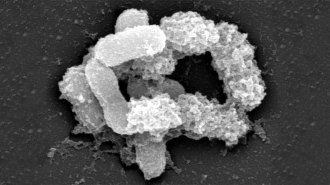 Neuroscience
NeuroscienceBoosting a gut bacterium helps mice fight an ALS-like disease
Gut bacteria may alter ALS symptoms for good or ill.
-
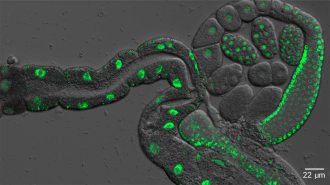 Genetics
GeneticsThis gene may help worms live longer, but not healthier
Antiaging therapies may have trade-offs, research on worms suggests.
-
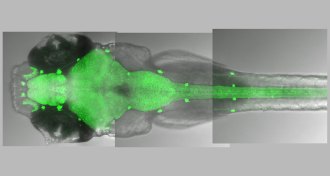 Neuroscience
NeuroscienceBoth fish and humans have REM-like sleep
Sleeping zebrafish have brain and body activity similar to snoozing mammals, suggesting that sleep evolved at least 450 million years ago.
-
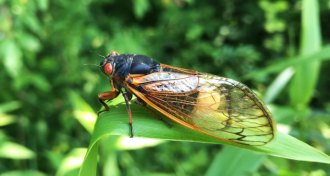 Life
LifeThese fungi drug cicadas with psilocybin or amphetamine to make them mate nonstop
Massospora fungi use a compound found in magic mushrooms or an amphetamine to drive infected cicadas to mate and mate and mate.
-
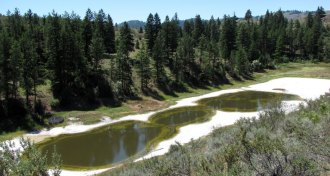 Life
LifeDried Earth microbes could grow on Mars with just a little humidity
Showing that salt-loving bacteria can double their numbers after absorbing damp air has implications for life on other planets.
-
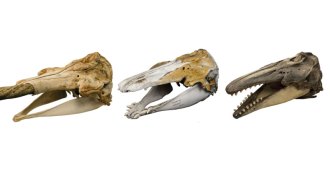 Genetics
GeneticsDNA confirms a weird Greenland whale was a narwhal-beluga hybrid
DNA analysis of a skull indicates that the animal had a narwhal mother and beluga father.
-
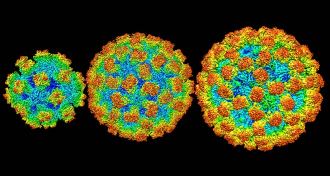 Life
LifeNorovirus close-ups might help fight stomach flu
Detailed views of a common stomach virus that causes vomiting and diarrhea could aid vaccine and disinfectant development.
-
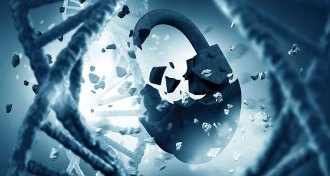 Genetics
GeneticsGenealogy companies could struggle to keep clients’ data from police
Police probably won’t stop searching DNA family trees to find crime suspects. New restrictions on database searches could spur more fights over privacy.
-
 Genetics
GeneticsAlmost all healthy people harbor patches of mutated cells
Even healthy tissues can build up mutations, some of which have been tied to cancer.
-
 Health & Medicine
Health & MedicineA fungus weaponized with a spider toxin can kill malaria mosquitoes
In controlled field experiments in Burkina Faso, a genetically engineered fungus reduced numbers of insecticide-resistant mosquitoes that can carry malaria.
-
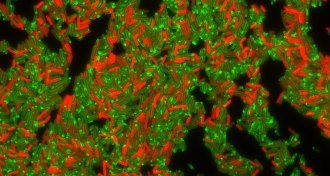 Life
LifeHow bacteria nearly killed by antibiotics can recover — and gain resistance
A pump protein can keep bacteria alive long enough for the microbes to develop antibiotic resistance.
-
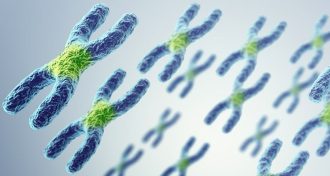 Genetics
GeneticsKey parts of a fruit fly’s genetic makeup have finally been decoded
Jumping genes may make it possible to divvy up chromosomes.